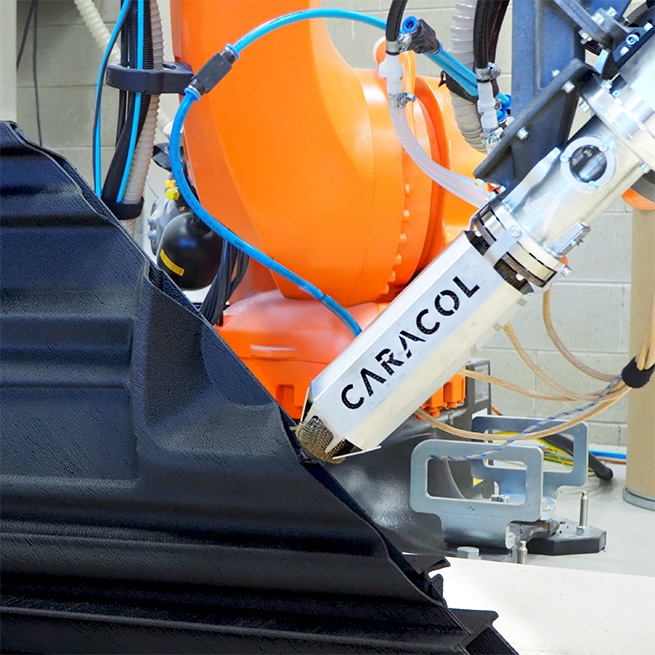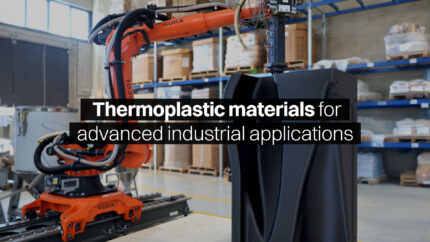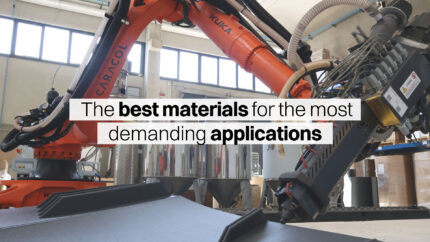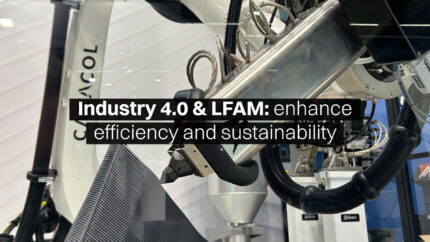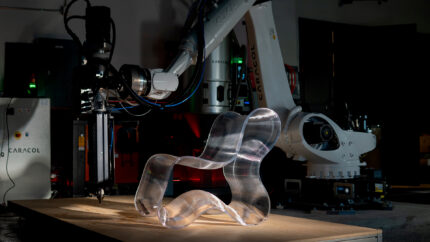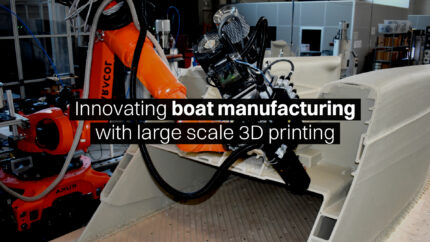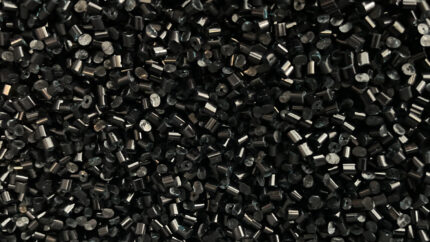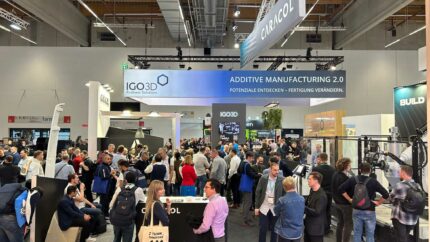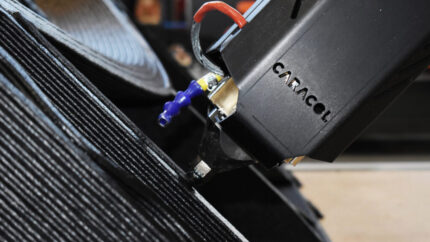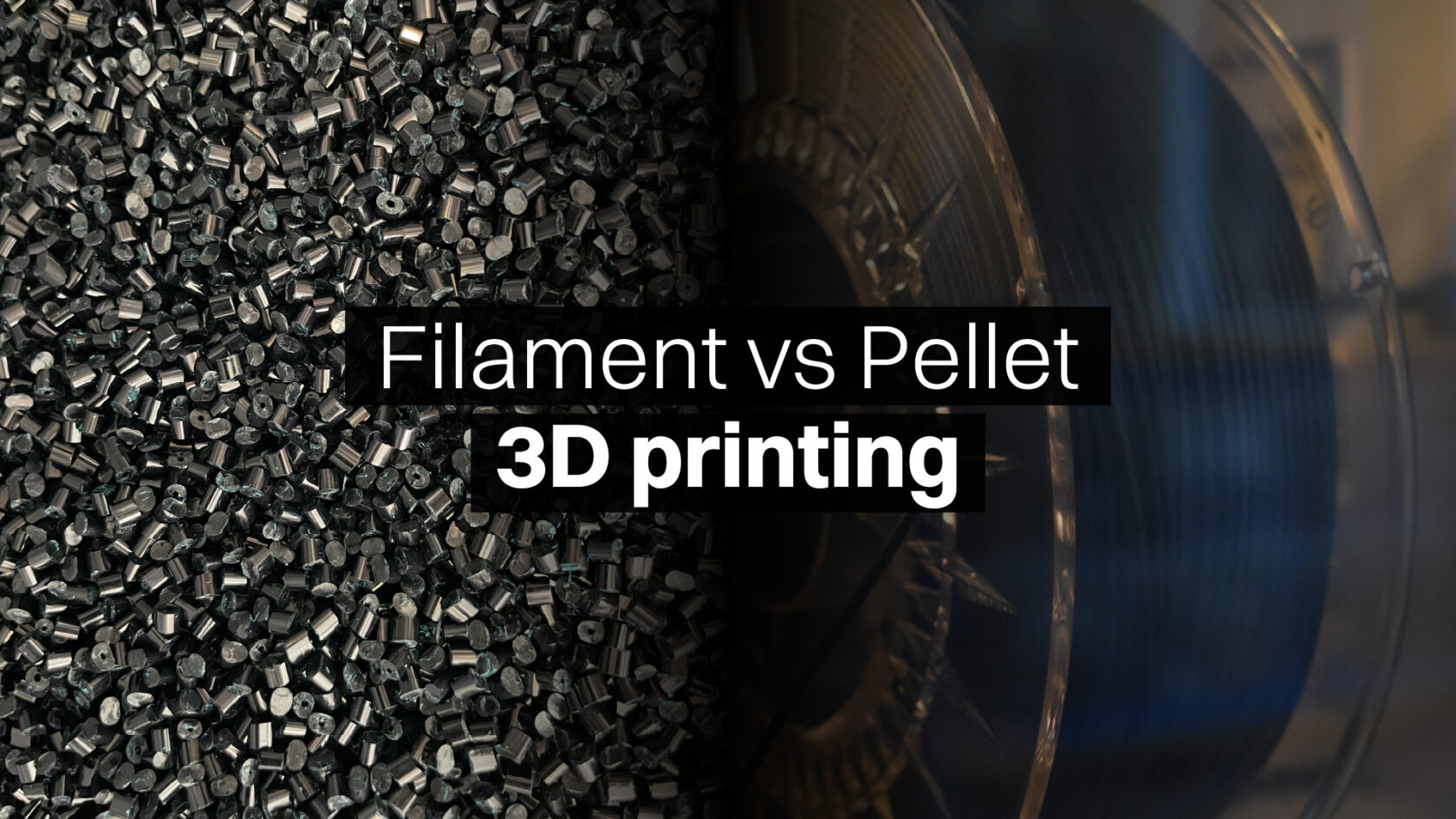
Which type of materials and processes to choose for your large-scale production
Polymers and composites are one of the most widely used material families in additive manufacturing. Malleable and widely available for different uses, many processes have been created to leverage their properties and characteristics for the production of parts, whether those are destined to be prototypes, tooling or end-use objects. Available in many forms – filaments, pellets, powders, resins – they meet the needs and requirements of manufacturers in all sectors.
By understanding more about the material, you can better determine what is applicable for your production process. In this article, we’ll investigate more specifically the differences between filament and pellet materials, their main characteristics and applications, understanding why pellet extruding technologies can lead to greater production efficiencies and flexibility for the production of advanced, large-scale parts.
Filament vs Pellet: Main Characteristics and Applications
Thermoplastic filaments, typically 1.75mm or 2.85mm in diameter, come in spools and are processed through traditionally compact FDM or FFF 3D printers, widely available and generally user-friendly. These printers make handling and feeding relatively simple. Due to ease of use, filament-extruding solutions are suitable for detailed and precise prints, especially when using high-quality filaments, and ideal for consumer-level 3D printing, prototyping, and small-scale manufacturing in education, makerspaces, and for hobbyist projects.
Thermoplastic pellets are the raw form of the resins used to produce filaments themselves. To process this material and plasticize correctly specialized extruders are required, capable of melting and depositing consistently. After applying heat, pellets melt and can be reformed within the desired 3D printed shape. There is a wider variety of options available, including compounds with higher percentages of composite materials such as carbon fiber and glass fiber up to 30/40%, and they are typically used in industrial and large-format 3D printing for advanced applications.
Being able to manage high-quality pellet extrusion process allows to efficiently produce large parts, ranging from prototypes, molds and tools, to finished parts, for sectors ranging from automotive, aerospace, marine, and construction industries, just to mention a few.
3D Printing Process for Thermoplastic Pellets
The 3D printing process using thermoplastic pellets involves several steps and specialized equipment:
Pellet Feeding: pellets are loaded into a hopper that feeds them to the extruder. Industrial machines are equipped with hoppers that ensure a continuous supply of material for uninterrupted printing.
Melting and Extrusion: inside the extruder, an auger screw pushes the pellets towards the heated section. The pellets are gradually melted by the heat and the friction generated by the screw. The molten plastic is then forced through a nozzle, similar to how filament is extruded, but the mechanism accommodates the bulk form of the material.
Layer Deposition: the printer’s motion system moves the nozzle to deposit the molten plastic layer by layer, following the design specified by the digital 3D model. Cooling fans or systems may be used to help solidify the plastic quickly, ensuring precision and stability of the printed layers.
Building the Object: the process continues layer by layer until the entire object is built. Depending on the material and specific application, post-processing may be required to achieve the desired finish or mechanical properties.
Main Benefits of Plastic Pellets vs. Filament 3D Printing
The process is more complex when compared to filament extrusion, but it does hold several benefits for industrial manufacturing.
Scalability: large prints need to be made from pellets. The scalability of this process is a game-changer for a highly efficient production of large parts, especially required in advanced industries. Pellet extruders are better suited for large-format 3D printing, as they can handle higher throughput (maximum output per hour) and larger volumes of material.
Cost Efficiency: thermoplastic pellets are significantly less expensive than filaments, as the additional processing steps involved in manufacturing filaments from pellets (extrusion, spooling, and packaging) increase the cost of the material. In industrial applications where large quantities of material are used, the cost savings from using pellets can be substantial. Making large parts from pellets guarantees better business cases on parts produced.
Material Versatility: From Polypropylene to high-end options like PEI or PEEK, there are more material options available in pellet form, including high-performance and engineering-grade plastics that are not commonly available as filaments. Pellets can be easily mixed to create custom material blends with specific properties, such as enhanced strength, flexibility, or thermal resistance.
Reduced Waste: pellets typically come in bulk bags or containers, reducing the amount of packaging waste compared to individually spooled filament rolls. Moreover, the ability to use pellets in bulk reduces the amount of leftover material, which is common with partially used filament spools.
Environmental Impact: pellet can have a higher percentage of recycled plastic, making the printing process more sustainable and reducing the environmental footprint. At the same time, the production and shipping of pellets have a lower carbon footprint compared to filaments, primarily due to the reduced processing and packaging needs.
Conclusion
3D printing with pellet offers significant advantages over filament, especially in terms of cost, material versatility, waste reduction, environmental impact, and scalability. While filament extrusion remains popular for consumer-level and detailed small-scale prints, pellet extrusion is increasingly becoming the method of choice for industrial and large-format applications. Understanding the strengths and applications of each method enables manufacturers to choose the best approach for their specific needs, paving the way for more efficient and innovative 3D printing solutions.
